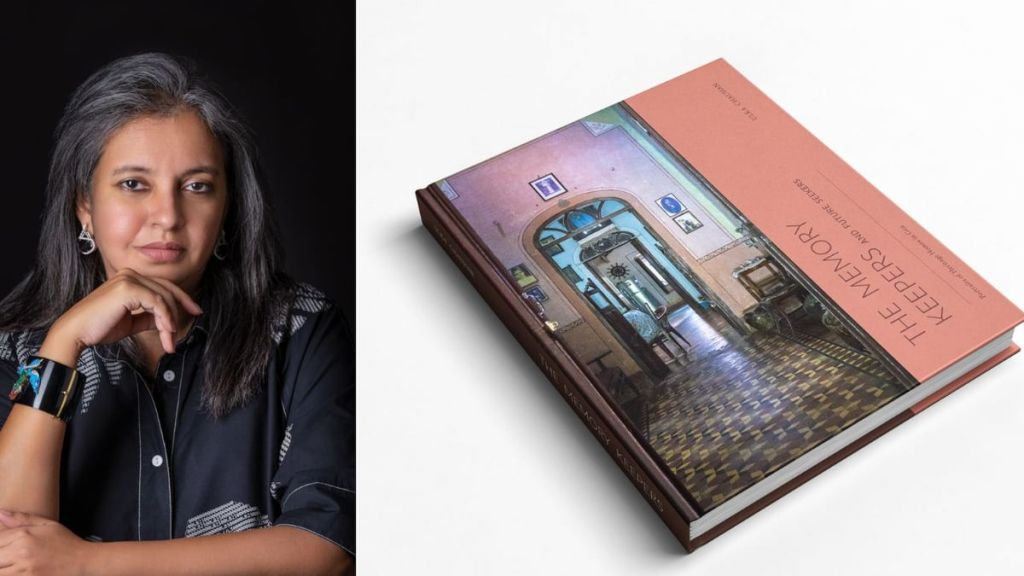
Photographer Ulka Chauhan’s love for photography goes back to the early 80s when her dad gifted her a camera.
Chauhan has lived across four countries in four continents for two decades, often finding herself reflecting on the topic of home. During this process of locating and relocating, she became drawn to the story of Goan homes which is the focus of her new book titled ‘The Memory Keepers and Future Seekers: Portraits of Heritage Homes in Goa’, to be released on October 5 at the Festa de Goa, Royal Opera House, Mumbai.

The book, through a layered narrative with visual and literary portraits of the 300+ year-old homes in Goa, focuses on stories of families and fragments of memories, while also touching upon the historical, cultural, political, economic, social, and religious moments that shaped Goa. Through the photos in her book, Chauhan freezes a past that has gone by, while at the same time bringing life to it.
Excerpts from the interview:
What is the story behind the first part of your book titled ‘Memory Keepers and Future Seekers: Portrait of Heritage Homes in Goa’.
The material culture contained within Goa’s heritage homes, the architecture, antiques and artefacts, along with the personal stories and fragments of memories of their occupants. really make the larger histories of Goa come softly into focus. But apart from looking at these homes as the memory keepers of the past, my book also serves to spark conversation regarding the futurity of heritage homes. How can these grand homes of the past adapt to the present and sustain the future? At times when many Goan families have let go of their ancestral homes, the six homes featured in my book have persisted and prevailed in keeping their homes and memories alive.

What motivated you to go on a journey to capture the heritage of Goa, when many have already done such work, be it in films and books?
Having lived across four countries in four continents for two decades, I often find myself reflecting on the topic of home. In my state of frequent locating and relocating, I became drawn to the story of these Goan homes which are so firmly rooted in place, having remained in the same family through generations and centuries. Although the story of Goan homes has been told and retold several times, the only work on Goan homes that has truly moved me is a book titled, ‘The Edge of Faith’, by the late fashion and fine art photographer Prabhudda Dasgupta. His soulful images are an incredible source of inspiration and a valuable starting point from which I embarked on my own four year long exploration of Goan homes.

Which city excites you the most as a photographer?
Whether I am photographing in public spheres like the streets of Mumbai or Zürich or whether I am photographing inside private spaces like these heritage homes in Goa. I’m most fascinated about capturing people as they truly are. I like to use light, colour and composition to capture the ordinary, humdrum moments of day-to-day life which become quite extraordinary when captured through a viewfinder. To me, city streets or homes, are just a backdrop, or rather a centre stage on which this exciting theatre of life plays out.
How do you capture the character of a city in a photograph?
To capture the real essence of a city one needs to capture the character of its people. In my first book titled ‘Two Worlds’ I have captured two cities which are perhaps at the opposite ends of the spectrum between chaos and calm. My portraits of Mumbaikars and Zürchers reveal various facets of street life, tradition and modernity, lifestyles and livelihoods, festivities and faith, abundance and scarcity and intimacy and solitude.

Which camera do you use for your architectural photography?
I have always had an emotional connection with the Leica brand as my dad was a big Leica fan and I came to acquire his last Leica camera. Since then I have been shooting with a Leica M rangefinder camera which has completely changed the way I photograph. Being a manual system, it has taught me to slow down and shoot more mindfully, which I really enjoy.

When shooting a heritage home, what points do you keep in mind for the shoot?
Shooting in a heritage home is like being in a photographer’s paradise. Everywhere I look there is something I can capture through my viewfinder. Right from the vibrant hued facades, the textured and pigmented interior walls, the glittering crystal chandeliers, the patterned mosaic floorings and even the oyster shell windows. But once again, I like looking at architecture beyond the realm of form and function. As renowned architect Charles Correa rightly said, “Certainly architecture is concerned with much more than its physical attributes. Beneath and beyond the strata of structure, materials and texture, lie the deepest and most compulsive layers of all.”
Like portrait, wildlife, food, travel and other forms of photography, do you think architectural photography has been given its due importance?
There are many photographers who capture pure architecture, the physicality of space. But for me it is the human element that brings architecture to life. I hope that this way of thinking of architecture and architectural photography will be given its due importance.